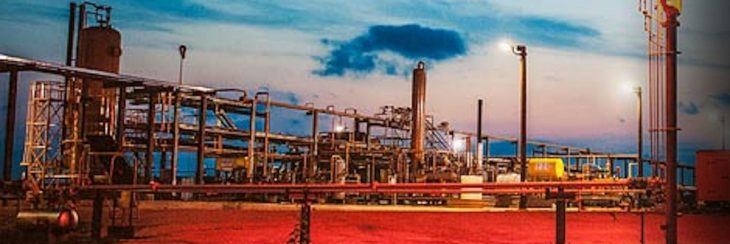Murphy Oil reports $10 million loss on foreign tax expenses, crude oil hedging contracts
by May 4, 2017 1:52 pm 287 views

Murphy Oil Corp. on Wednesday reported weaker-than-expected first quarter results as tax expenses on foreign asset sales and crude oil hedging contracts cut into financial results during the first three months of 2017, company officials said.
For the period ended March 31, the El Dorado oil and gas giant posted net income of $58.4 million, or 34 cents per share, compared to a net loss of $198.8 million, or $1.16, in the same period a year ago. On an adjusted basis, Murphy reported a loss of $10.2 million, or 6 cents per share. Revenues, however, jumped to $664.6 million, up 55% from $429 in the first quarter of 2016.
A survey of oil and gas analysts on Wall Street expected the Arkansas oil company to report a first quarter loss of three cents per share on quarterly revenue of $664.6 million, according to Thomson Reuters.
Company officials said the most significant one-time items affect the adjusted loss were a $96 million after-tax gain on the sale of Seal properties in Canada, an after-tax gain of $26 million for mark-to-market of open crude oil hedge contracts and a $55 million deferred tax expense related to undistributed foreign earnings. The tax expense is the result of the company determining that first quarter earnings from its subsidiaries operating in Canada, Malaysia and other Southeast Asia areas will not be reinvested into local operations and are expected to be repatriated to the U.S. in future periods.
“Murphy had strong first quarter results as we exceeded production guidance with high uptime performance across all our assets. Our production is outstanding considering that we brought online fewer wells than planned in our Eagle Ford Shale asset, as our base production and new wells during the quarter both exceeded our expectations,” said Murphy Oil President and CEO Roger Jenkins.
The Murphy chief executive said he was pleased with the significant free cash flow generated by our offshore business.
“We also addressed the tax status regarding future foreign earnings repatriation, which will allow for additional cash management flexibility across our company,” he said.
In Thursday’s morning trading, Murphy’s shares (NYSE: MUR) were off 4.44% at $24.56. Over the past 52 weeks, Murphy’s stock has traded in the range of $24.03 on the low end and a high of $35.19.
In its North American onshore operations, Murphy said it produced more than 85,000 barrels of oil equivalent per day in the first quarter with 51% liquids. First quarter 2017 operating expenses were $6.51 per barrel of oil equivalent, a 12% decrease from full year 2016.
In the Eagle Ford Shale, production in the quarter averaged 46 (Mboepd), comprised of 88% percent liquids. During the quarter, the company brought 13 wells online using high sand fracking techniques, and expects to bring almost 60 wells online for the remainder of 2017. Company officials said 19 of those wells will be developed in the second quarter, with full year production averaging approximately 50 Mboepd.
In the company’s Tupper Montney development in British Columbia, Murphy averaged 207 million cubic feet per day (Mmcfd) of natural gas production in the quarter. There was one well drilled in the first quarter and four wells previously drilled that were completed early in the second quarter. Strong production results from these wells, in addition to wells completed in 2016, are yielding projected ultimate recoveries exceeding 17 billion cubic feet equivalent (Bcfe) per well.
Production from the emerging Kaybob Duvernay shale play in western Canada for the quarter averaged nearly 3 Mboepd, comprised of 53% liquids. During the quarter, five wells were drilled and three wells brought online that are performing above or in line with pre-drill expectations, officials said. Murphy expects to drill and bring online 11 wells in the rest of 2017, including five in the second quarter.
Murphy’s offshore operations produced 84 Mboepd for the first quarter with 73% liquids. In Malaysia, lock K and Sarawak averaged 38,000 barrels of liquids per day, while Sarawak natural gas production averaged 117 million cubic feet per day.
Company officials said Murphy’s yearly capital expenditure guidance is being maintained at $890 million. Full year 2017 production is being reaffirmed in the range of 162 to 168 Mboepd. At the end of the quarter, Murphy had $2.8 billion of outstanding debt and $1.1 billion in cash and liquid invested securities.
